
* Although the shoot-down of a U-2 over the USSR in 1960 was the historical high point of the Lockheed U-2's career -- and certainly a spectacular public unveiling -- the aircraft was only getting started, flying many missions through the Cold War. Indeed, by the late 1960s, it was obvious more of them were needed, leading to the much-improved, second-generation "U-2R" -- which continued in service well into the 21st century.
* Lockheed proposed a "U-2B" that would patrol the borders of the Soviet Union, using an infrared sensor to spot missile launches. Two U-2As were converted to "U-2D" configuration to test the concept; they had a second seat for a sensor operator in the Q-bay, with the AN/AAS-8 infrared sensor mounted in a fairing above the right side of the second cockpit. The U-2B didn't happen, there being skepticism that it really was a good solution. The two U-2Ds remained in service for trials, being modified to a number of configurations.
Surviving U-2As were generally upgraded to "U-2C" configuration, originally with the P&W J75-P-13A turbojet, with 70.3 kN (7,165 kgp / 15,800 lbf) thrust; and then the J75-P-13B engine, with 75.6 kN (7,710 kgp / 17,000 lbf) thrust. The J75 engine provided a general improvement in performance. The U-2C had distinctly enlarged engine intakes to obtain more airflow. No U-2Cs were built new, all being upgrades from U-2Bs, or directly from U-2As. Confusingly, Air Force U-2s were apparently never updated with the J75 engine, though the USAF did inherit U-2Cs from the CIA. U-2Cs sometimes had:
The relatively small fleet of U-2s was never highly standardized, being particularly variable in payload configurations.
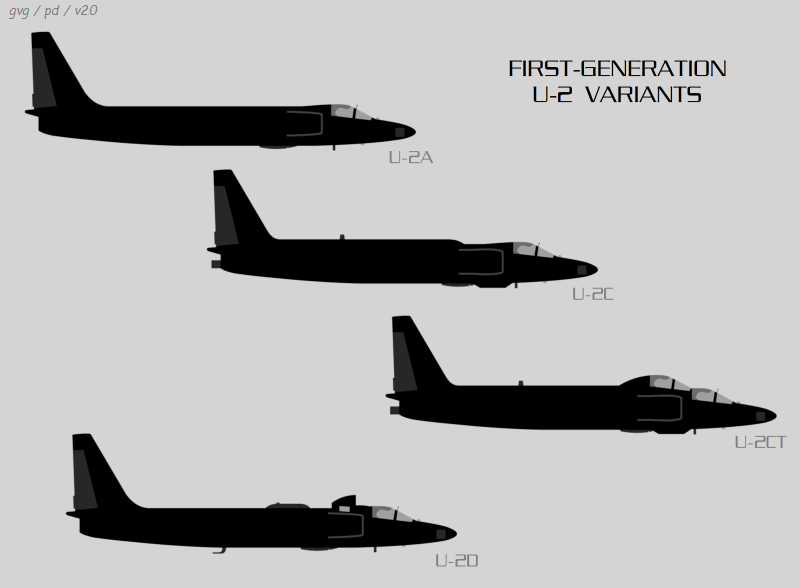
A number of U-2Cs were fitted with an inflight boom refueling socket on the front of the dorsal spine, along with an automated fuel-management system, and redesignated "U-2F". Inflight refueling with the U-2 was problematic; the wake turbulence from the tanker could tear a U-2 apart -- and even without inflight refueling, U-2 missions stretched pilot endurance to the limit. The oxygen supply had to be increased to permit the longer missions. The Air Force obtained a similar configuration as the "U-2E". It appears that inflight refueling really didn't prove that useful, with these machines generally converted back to U-2C configuration.
* The Powers incident stopped overflights of the USSR; they had become suicidal. Detachment B and C were absorbed into Detachment D at Edwards AFB, to become the consolidated "Detachment G". From 1961, the Republic of China (Taiwan) Air Force's (ROCAF) 35th Squadron also flew U-2Cs under CIA control as "Detachment H". The prime focus of the Taiwanese "Black Cat Squadron" was surveillance of Red China, though missions were also performed over North Korea and North Vietnam.
From 1960, CIA U-2s of Detachment G performed overflights of Fidel Castro's Cuba, originally with the intent of supporting an invasion of the island. The overflights paid off big-time in the summer of 1962, when the imagery showed that Soviets troops were setting up SA-2 SAM batteries in Cuba. This was alarming because the SA-2 could shoot down the U-2; it was more alarming because it raised the questions: Why are the Soviets setting up so many SAM batteries? What are the SAMs supposed to be protecting?
The suspicion grew that the Soviets were setting up medium-range ballistic missile (MRBM) sites on the island. This led to an odd bureaucratic exercise in which the CIA pilots were replaced by USAF pilots, on the premise that SAC pilots would have a better cover story if shot down. There was some griping over the arrangement, but it went ahead anyway, with US National Security Adviser McGeorge Bundy saying that the CIA and SAC were acting like "quarreling children".
That October, the U-2s spotted what clearly looked like MRBM sites, with low-level reconnaissance aircraft confirming the findings in indisputable detail. The result was a superpower confrontation, with US President Kennedy ordering a blockade -- called a "quarantine" -- of Cuba. Both the US and USSR were on high-level war alert, and there was an agonizing moment on 27 October when a U-2 was shot down by an SA-2 SAM. The pilot, Major Rudolf Anderson, was hit by a warhead fragment, and killed immediately. American brass wanted to act, but Kennedy said: "Wait".
As it turned out, the Soviet commander in Cuba had ordered the shoot-down without consulting the Kremlin; since matters seemed to be spiraling disastrously out of control, Soviet Premier Khrushchev immediately declared that the missiles would be withdrawn. U-2 surveillance of Cuba continued to verify the pullout -- though it was performed by SAC.
Incidentally, on the same day that Anderson's U-2 was shot down, 27 October 1962, an Air Force U-2 flying out of Eielson AFB in Alaska on a polar air-sampling mission -- to get fallout samples from a recent Soviet nuclear test -- got lost coming back home and ended up overflying Siberia. The pilot, Captain Charles Maultsby, couldn't use his driftsight for celestial navigation, since the aurora borealis was lighting up the high-altitude sky.
Although Soviet interceptors were scrambled to shoot down the U-2, it managed to make it back to a landing on a primitive military airstrip at Kotzebue, on Alaska's Seward Peninsula. The Americas had worried the Soviets would believe the intrusion was a prelude to a strike, but Soviets protests over the matter were muted. They accepted American assurances that the pilot had been lost, because there was nothing of strategic significance in the region overflown by the U-2.
* From late 1963, U-2s of the USAF 4080th SRW performed surveillance flights in support of the war in Southeast Asia, under a program codenamed LUCKY DRAGON -- later TROJAN HORSE, finally GIANT DRAGON. The U-2s overflew North Vietnam early on, but the North Vietnamese soon installed SA-2 batteries. Overflights of North Vietnam were then taken over by the Ryan Lightning Bug drones, which were reconnaissance versions of the Ryan Firebee target drone. The USAF U-2s conducted stand-off surveillance from international airspace.
From 1963, at least one USAF U-2 was fitted with a long, striped air-data boom under the nose to perform observations of high-altitude turbulence, under the "High Altitude Clear Air Turbulence (HICAT)" program. The program lasted for a few years, with the HICAT U-2 sent around the world to perform observations. It was an early example of the use of the U-2 to perform pure research missions.
There were a number of countries that the CIA wanted to overfly with the U-2, but didn't have air bases nearby from which such missions could be mounted. As a result, the agency investigated launching and recovering U-2s from US Navy aircraft carriers. The project, initiated in August 1963, was codenamed WHALE TALE. An initial launch of a more or less stock U-2C from the carrier US KITTY HAWK off of San Diego at that time went well enough -- the U-2 had a minimal take-off run, particularly with the carrier steaming into the wind, and didn't need a catapult boost -- but the landing was a fiasco, not too surprising given that the machine was reluctant to come back to Earth and a handful to land. The U-2C was forced to boost back into the sky after bouncing around on a wingtip.
However, the concept still seemed feasible, resulting in production of three "U-2G" aircraft for carrier operations. They featured stronger landing gear; a carrier landing arresting hook; some airframe reinforcement to handle the stress of arrested landings; a fuel-dump system to reduce the U-2's landing weight, if necessary; and spoilers or "lift dumpers" on top of the outboard wings -- panels that would pop up to disrupt the wing's lift, and ensure that it fell out of the air onto the carrier deck.
A U-2G performed two flights from the carrier RANGER in May 1964 to overfly Mururoa Atoll in French Polynesia, which the French were using as an atomic test site. That would turn out to be the only operational mission of the U-2G; the Navy, it seems, didn't like the idea of allocating a carrier task force to fly CIA missions. The CIA did retain the carrier capability for four more years, but it was never used again. A single "U-2H" was built that had the carrier capability, plus inflight refueling capability; however, the result was an overweight aircraft, and so the inflight refueling capability was removed, turning the machine into a U-2G.
* The CIA was also trying to use the U-2 to penetrate China's wall of secrecy. In 1965, the government of India gave the CIA permission to place an automated ELINT station on a tall Himalayan peak to monitor Chinese missile launches, but the station was lost in an avalanche. In a parallel effort, the agency worked on a program appropriately codenamed JAVELIN in which a Taiwanese-operated U-2 was to drop a spikelike ground penetrator, codenamed TABASCO, near the Chinese nuclear test range at Lop Nur to monitor nuclear tests by relaying seismic and acoustic data back to receiving stations. Tests of the TABASCO sensor were performed to monitor nuclear tests in the US -- but when the penetrator was dropped over China, it disappeared without a trace.
That was part of a major program of U-2 overflights of China, codenamed Operation TACKLE, that had been underway for the previous few years. India and China had a border clash in 1962, with the US providing the Indian government with some U-2 intelligence imagery. That led to secret collaboration between the US and India, a handful of U-2 overflights of China being performed in 1964 from Charbatia in India.
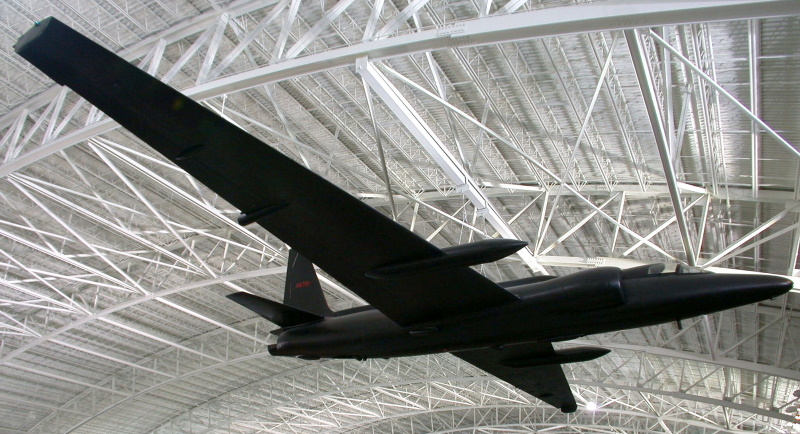
Overflights from Taiwan using Taiwanese pilots were the mainstay of TACKLE. In 1964, Texas Instruments introduced an infrared scanner, the "FDD-4", that could be used on night overflights to see if buildings on atomic development and test facilities were heated, meaning they were in operation. A number of flights were performed with the FDD-4; the missions were initially frustrated by a series of technical glitches, but a successful mission was finally flown against the nuclear facility at Baotau on 8 January 1965, with the scanner showing that the facility was in fact operational.
The China overflights were dangerous, as demonstrated by the loss of a U-2 mission two days later, on 10 January 1965, from an SA-2 SAM, the pilot being killed. In the spring of 1965, the U-2s were fitted with an SA-2 missile warning system known simply as "OS" that indicated when the missile guidance radar shifted from low-pulse rate search mode to high-pulse rate targeting mode. It was known as "Oscar Sierra" from the military phonetic alphabet, or simply as "Oh Shit!" Taiwanese pilots learned to take evasive action whenever the OS light went on, and in fact took pictures of near misses of SA-2s, and of SA-2 batteries firing on them.
By the summer of 1966, the CIA's fleet of U-2 spyplanes had shrunk to six aircraft, but the agency's Taiwanese friends were making good use of them. Overflights of Red China were performed in 1966 and 1967, in some cases flying out of Ban Tahkli in Thailand. Another TABASCO penetrator was dropped, this time successfully, on 7 May 1967; a follow-up flight was performed to relay data from the sensor. The Red Chinese were not tolerant of the overflights, showering them with SA-2 SAMs when the opportunity arose, and shooting down a U-2 in 1967.
* In the late 1960s, as discussed below, the first-generation U-2 fleet began to give way to a second-generation U-2, but survivors of the first-generation fleet continued in service. In the 1970s, the decision was belatedly made to develop a two-seat trainer, with a U-2C converted to "U-2CT" configuration, performing its initial flight in its new guise in 1973.
The U-2CT had a second cockpit with a "piggyback" canopy, installed in the Q-bay. The U-2CT proved very useful, with a second conversion flown from 1975. It is puzzling as to why it took so long to introduce the U-2CT; had a trainer been available early on, fewer U-2s would have been lost in crashes and fewer pilots killed, meaning the trainer would have paid for itself. Although the U-2 cockpit was too cramped to permit use of a proper full-pressure suit, an updated capstan suit -- the Dave Clark S-100 -- was introduced in 1970. It leveraged off a helmet from a full-pressure suit, and was generally more comfortable to wear.
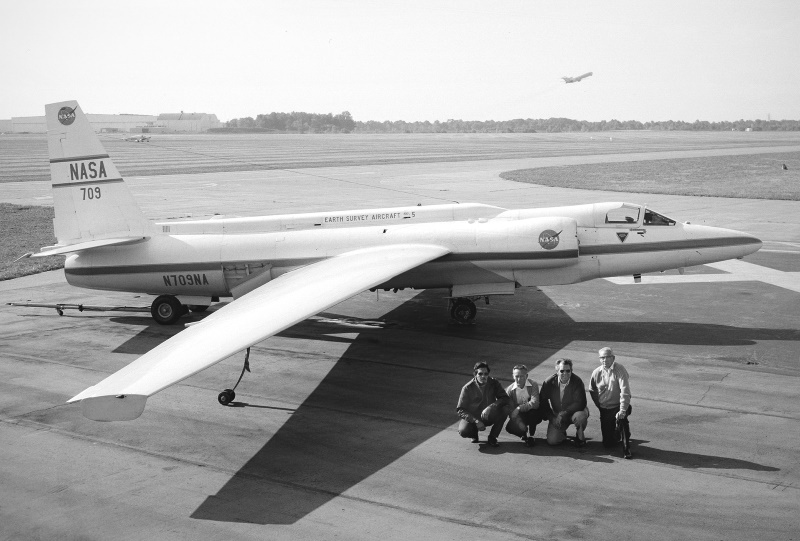
The U-2 kept busy all over the world during the 1970s. The USAF passed on two U-2Cs to NASA in 1971, these machines being flown on research missions. Along with visible-light and infrared cameras for survey and Earth-resource monitoring, they carried:
The instruments were, in some cases, prototypes of instruments to be flown on satellites. The two U-2Cs were retired in 1987, being among the last of the first-generation U-2s in service. Of the 45 U-2As built, only 11 survived to retirement. 26 pilots were killed flying the machine. Most of the surviving aircraft ended up as museum displays.
BACK_TO_TOP* By 1963, attrition had greatly whittled down the U-2 fleet. Lockheed was working on the high-speed "A-12" for the CIA, which would also lead to the Air Force's "SR-71", and so didn't have resources to pump into a truly new version of the U-2. Kelly Johnson did, however, have his engineers modify the U-2, stretching it by adding fuselage plugs, with this concept labeled the "U-2L". There was some interest in it, though the CIA suggested that it should be fitted with a camera in the nose to take photos of Soviet satellites. A rotating camera was accordingly added to the design, which then became the "U-2M",
There was no inclination to put the improved design into production. Lockheed kept refining it, with the CIA funding a study contract in 1966, and then ordering eight new machines. Ultimately, what started out as an easy modification of the basic U-2 design ended up being a much more comprehensive update, with the first flight of the "U-2R" on 28 August 1967, Bill Park being at the controls.
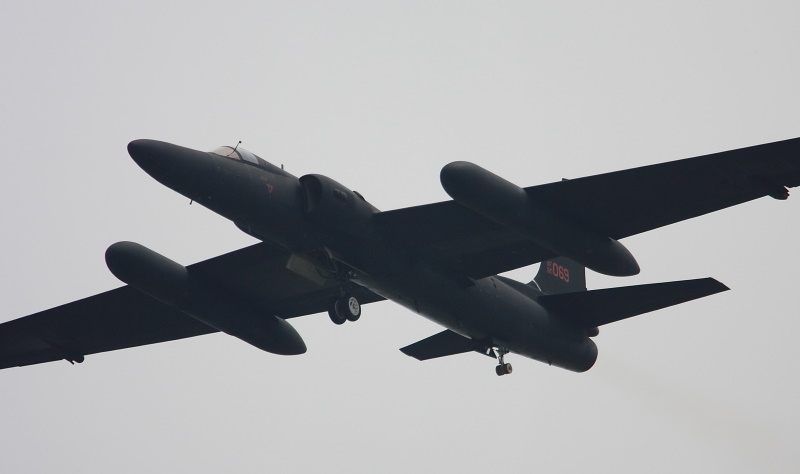
The U-2Rs were much bigger and more capable than the earlier U-2s. They had the same general configuration as the original U-2 and retained the J75-P-13B engine -- with some improvements, such as a higher restart altitude -- but they featured:
The U-2Rs went into service in 1969. The most important payload was the Itek IRIS II, which could scan a 100-kilometer (60-mile) swath from 21,340 meters (70,000 feet). 12 U-2Rs were built, it appears with the quantities split between the CIA and the USAF. One was produced as a trainer, with a second "piggyback" cockpit in the Q-bay, and designated "U-2RT".
_____________________________________________________________________
LOCKHEED U-2R:
_____________________________________________________________________
wingspan:
31.39 meters (103 feet)
wing area:
92.9 sq_meters (1,000 sq_feet)
length:
19.13 meters (62 feet 9 inches)
height:
4.88 meters (16 feet)
empty weight:
7,030 kilograms (15,500 pounds)
MTO weight:
18,755 kilograms (41,300 pounds)
cruise speed:
> 690 KPH (> 430 MPH / 375 KT)
service ceiling:
> 24,385 meters (> 80,000 feet)
range:
10,060 kilometers (6,250 miles / 5,430 NMI)
_____________________________________________________________________
The U-2R was carrier-qualified under an effort codenamed BLUE GULL V, U-2Rs being fitted with a tailhook, but the Navy was again unenthusiastic about supporting U-2 operations. Two of the U-2Rs were flown in a US Navy evaluation from 1969, as part of the "U-2EP-X" (Electronic Patrol / Experimental) program. They featured surface-search radar in the nose, plus other sensors in the wing pods, and had a radio datalink system. The Navy decided against the concept.
The Taiwanese operated them against Red China as before -- though by that time, they only performed observations from international airspace. CIA U-2s were also used to monitor the status of the cease-fire between Egypt and Israel under Project EVEN STEVEN during 1970. By that time, the political writing was on the wall for the CIA's aerial spy assets. Operating the agency's own little air force was expensive, there was pressure to consolidate aerial reconnaissance assets under one organization, and the logical owner was the US Air Force. The NRO pushed for the consolidation, and the agency wasn't particularly inspired to fight it. The CIA turned over its surviving U-2s to the USAF in August 1974, ending eighteen years of agency operations with the type, with the Taiwanese Black Cat Squadron also ending operations at that time.
From 1981, 37 more U-2Rs machines were built, with two going to NASA under the designation of "ER-1", the other 35 going to the USAF as "TR-1". They included 31 "TR-1A" single-seaters, and 4 "TR-1B" trainers, with the last of the batch delivered in 1989. It seems one trainer was converted to a single-seater, and two single-seaters were converted to trainers.
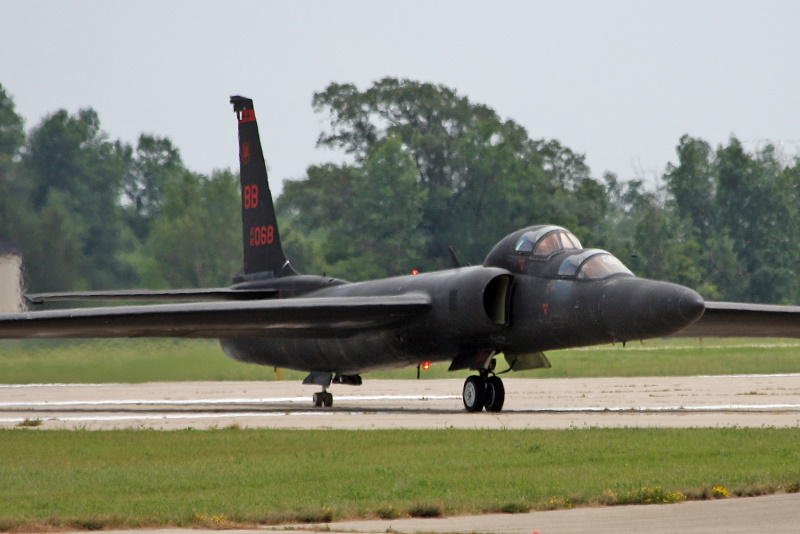
The new machines required reconstruction of the assembly line -- and also proved somewhat troublesome to Lockheed, in that the Air Force was much more insistent on working to government procedures than had been the case for earlier U-2 production.
In June 1976, the U-2s of the 100 SRW were transferred to the 9th Strategic Reconnaissance Wing (9 SRW) at Beale Air Force Base, California, and merged with SR-71 aircraft operations there. When the Strategic Air Command (SAC) was disbanded in 1992, the wing was transferred to the new Air Combat Command (ACC), to be redesignated the 9th Reconnaissance Wing (9th RW). The 9th RW included four squadrons, with detachments stationed in South Korea, Cyprus, the UK, and France. Air Force U-2s would also help make up "air expeditionary" wings in the Middle East, as needs demanded.
That same year, 1992, the TR-1 designation was abandoned, with single-seaters reverting to the "U-2R" designation, and the trainers getting the designation of "TU-2R". In the 1990s, the U-2 performed surveillance of Iraq during the First Gulf War, and to monitor Iraq after the end of the conflict. The U-2 also performed missions over the Balkans during the Wars of the Yugoslav Succession, in that decade.
BACK_TO_TOP* At the end of the millennium, the U-2 was still soldiering on, and in fact the Air Force's 9th Reconnaissance Wing was operating the aircraft at about three times the Cold War sortie rate. The intense operational rate was hard on pilots and aircraft, with the fleet suffering from high loss rates. The U-2 was used in Operations DESERT SHIELD and DESERT STORM during the Gulf War in 1990 and 1991; over Bosnia and Kosovo in support of NATO forces during the 1990s; in Afghanistan in 2001, and in support of Operation IRAQI FREEDOM in 2003.
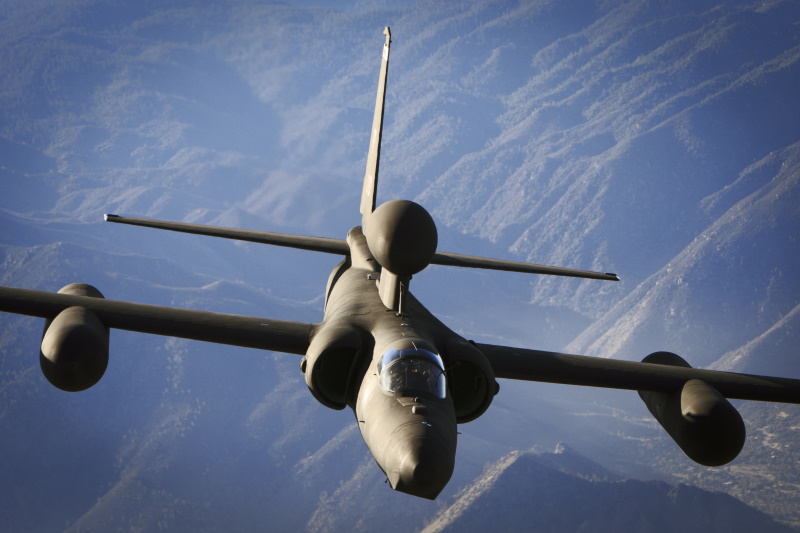
By the early 21st century, payloads carried on U-2s included:
There was work on networking the U-2 to other platforms to allow, say, targeting data to be relayed in real time to airborne control systems, or directly to strike assets, to permit a rapid "kill cycle". In one significant exercise -- Project HYDRA, announced in 2021 -- a U-2 carried an "Open Systems Gateway" payload to relay data between F-22 Raptor and F-35 Raptor fighters, which had incompatible stealthy datalinks.
All U-2 aircraft were refitted with the General Electric F118-GE-101 non-afterburning turbofan engine, which was lighter and smaller than the original J75-P-13 engine. The refit also added a heftier electric generator and a new wiring harness, which included fiber-optic data lines. The upgraded machines were designated "U-2S", for the single-seaters, and "TU-2S", for the two-seat trainers.
A "Reconnaissance Avionics Maintainability Program (RAMP)" was conducted from 2001 by Lockheed Martin -- the current incarnation of Lockheed -- to bring the U-2's cockpit up to date. It involved fit of three 15 x 20 centimeter (6 x 8 inch) color multifunction displays, a secondary flight display, and new radio controls. The multifunction displays, from left to right, provided readout on aircraft systems; flight data; and maps. GPS navigation had already been added in an earlier update. Old cockpit controls were retained as needed, and wired via a processor to drive the new displays -- though the driftsight was gone. There was talk of putting a camera in the bottom driftsight dome that could be routed through one of the displays, but it's not clear if it was ever done.
The first RAMP U-2S returned to service in 2002, with the program completed in 2007. A BAE Systems AN/ALQ-221 advanced defensive system -- consisting of a radar warning receiver and electronic countermeasures subsystem -- was also included in the upgrade. A later program increased cabin pressurization, reducing occurrences of altitude sickness. Experiments were conducted in U-2s fitted with artificial intelligence subsystems, in one case taking control of the ASARS to hunt for adversary missile launchers, without pilot intervention.
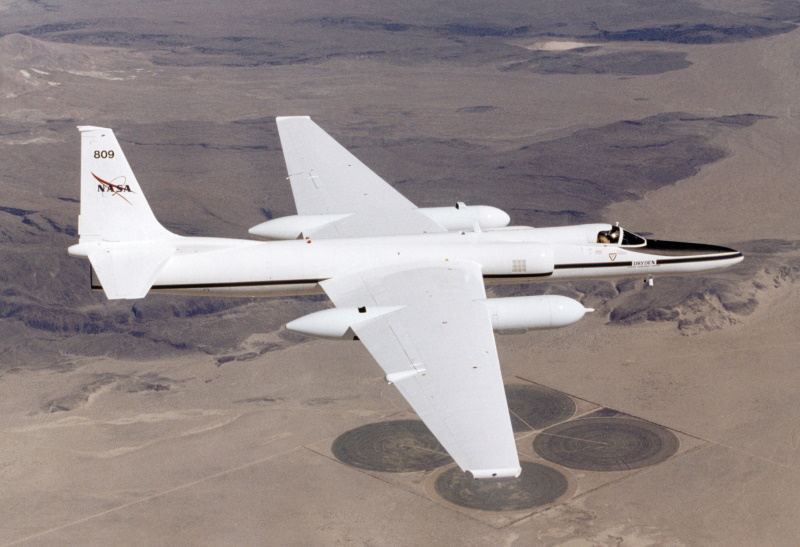
The Air Force had planned to retire the U-2 by 2012, replacing it with the RQ-4 Global Hawk; it didn't work out that way, primarily because the Global Hawk wasn't up to the U-2's capability level. Nonetheless, the U-2 is in its last days, with the current plan to retire it by 2026. Ironically, the RQ-4 will be retired a year later. The Air Force plans to rely on space-based surveillance assets, which have become more capable and comprehensive, and are less vulnerable to adversary air defenses. NASA is likely to keep its ER-2s flying for well longer.
BACK_TO_TOP* As a little footnote to the U-2 story, in the mid-1970s six U-2Cs were deployed to the UK to test out a SIGINT system named PAVE ONYX against the Eastern Bloc. At least some of these machines were painted in a neat two-tone camouflage scheme -- but it was a funny sort of camouflage, being only intended to fool the British public. The overall black color looked sinister, and so the British government asked that the aircraft be painted in a more conventional military color scheme to reassure the citizens.
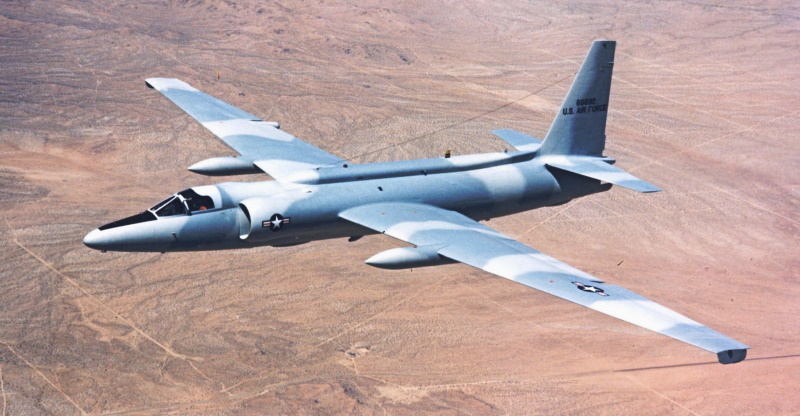
* Sources include:
* Illustrations details:
* Revision history:
v1.0.0 / 01 aug 19 v2.0.0 / 01 sep 19 / General update. v2.0.1 / 01 oct 19 / Some cleanup. v2.0.2 / 01 aug 20 / Tidying for ebook release. v2.0.3 / 01 apr 22 / Review & polish. v2.0.4 / 01 mar 24 / Review & polish. (+)BACK_TO_TOP
